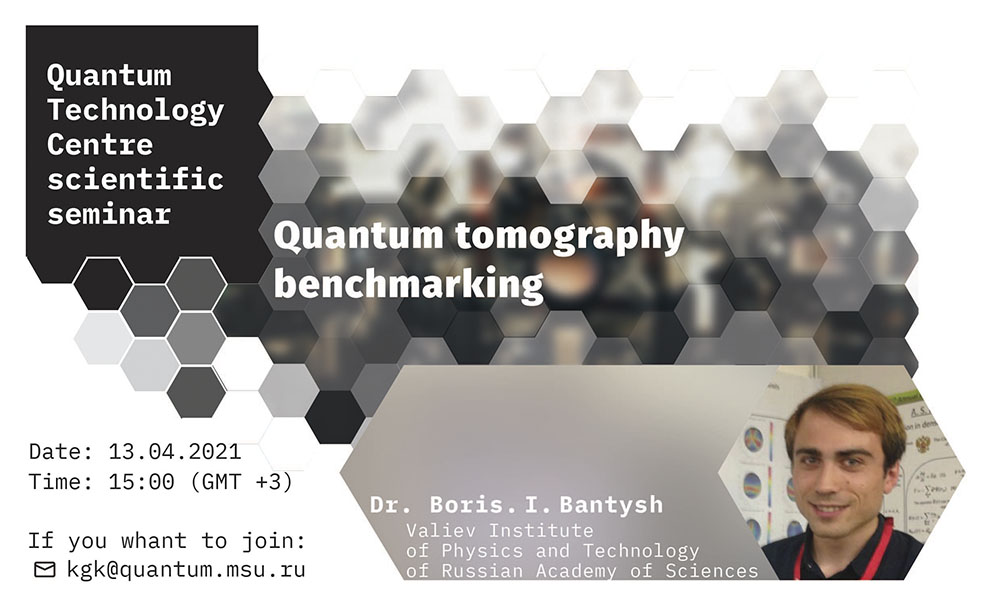Способ генерации пространственных состояний Белла
Способ магнитооптической модуляции света с использованием поверхностных плазмонов
СВЧ-усилитель на основе высокотемпературного сквида с четырьмя джозефсоновскими контактами
Зонд на основе полевого транзистора с наноразмерным каналом
Кантилевер с одноэлектронным транзистором для целей зондовой микроскопии
Quantum tomography benchmarking

Recent advances in quantum computers and simulators are steadily leading us towards full-scale quantum computing devices. Due to the fact that debugging is necessary to create any computing device, quantum tomography (QT) is a critical milestone on this path. In practice, the choice between different QT methods faces the lack of comparison methodology. Modern research provides a wide range of QT methods, which differ in their application areas, as well as experimental and computational complexity. Testing such methods is also being made under different conditions, and various efficiency measures are being applied. Moreover, many methods have complex programming implementations; thus, comparison becomes extremely difficult. In this study, we have developed a general methodology for comparing quantum state tomography methods. The methodology is based on an estimate of the resources needed to achieve the required accuracy. We have developed a software library (in MATLAB and Python) that makes it easy to analyze any QT method implementation through a series of numerical experiments. The conditions for such a simulation are set by the number of tests corresponding to real physical experiments. As a validation of the proposed methodology and software, we analyzed and compared a set of QT methods. The analysis revealed some method-specific features and provided estimates of the relative efficiency of the methods.
Experimental demonstration of time-resolving quantum receivers and quantum measurement confidence estimation

In this talk I'll cover the first experimental demonstration of a holistic quantum-enabled communications scheme with the record energy efficiency using time-resolving quantum receivers. I'll also discuss single-shot confidences obtained for individual quantum measurements in the state identification problem.